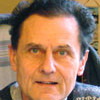Carnot Cycle and Heat-Machines: From Applications (Systems and Processes) to Fundamentals (FDOT)
A special issue of Entropy (ISSN 1099-4300). This special issue belongs to the section "Thermodynamics".
Deadline for manuscript submissions: closed (30 June 2023) | Viewed by 10136
Special Issue Editor
Interests: thermodynamics; energy; transfers; conversion
Special Issues, Collections and Topics in MDPI journals
Special Issue Information
Dear Colleagues,
Engineering thermodynamics remains in due course of improvement even if it starts from the sixties. A first step was the consideration of endoreversible direct and reverse machines. These phenomenological approaches are being improved, considering dissipative mechanisms, in order to represent more precisely the global performance of systems and processes (for example cascades, combined heat and power, valorization of heat rejection).
Optimization of systems and processes are imposed to define clear objectives (simple or multiobjective optimization) and the constraints applied to the systems and processes. It appears that this demarch is generic, and corresponds to what can be summarized as FDOT (Finite Physical Dimensions Optimal Thermodynamics). Among these dimensions are the geometrical ones (size), but also time (Finite Time Thermodynamics, FTT). However, we extend these to other dimensions, for example FST Finite Speed Thermodynamics.
The efficiency too could be considered finite (for example the effectiveness of Heat Exchangers HEX). Efficiency is also a central concept multiform and generally non-dimensional. It is related to quality, and consequently to the second law of thermodynamics. To these applications point of view could be added economic concern, but also environmental concern that is today difficult to control.
Applications are not disclosed from fundamental aspects of thermodynamics. This Special Issue is also open and connected to other branches of thermodynamics mainly statistical thermodynamics and quantum thermodynamics: an important development emerges recently regarding quantum machines. All these developments are welcomed, as well as entropy and exergy analysis.
Prof. Dr. Michel Feidt
Guest Editor
Manuscript Submission Information
Manuscripts should be submitted online at www.mdpi.com by registering and logging in to this website. Once you are registered, click here to go to the submission form. Manuscripts can be submitted until the deadline. All submissions that pass pre-check are peer-reviewed. Accepted papers will be published continuously in the journal (as soon as accepted) and will be listed together on the special issue website. Research articles, review articles as well as short communications are invited. For planned papers, a title and short abstract (about 100 words) can be sent to the Editorial Office for announcement on this website.
Submitted manuscripts should not have been published previously, nor be under consideration for publication elsewhere (except conference proceedings papers). All manuscripts are thoroughly refereed through a single-blind peer-review process. A guide for authors and other relevant information for submission of manuscripts is available on the Instructions for Authors page. Entropy is an international peer-reviewed open access monthly journal published by MDPI.
Please visit the Instructions for Authors page before submitting a manuscript. The Article Processing Charge (APC) for publication in this open access journal is 2600 CHF (Swiss Francs). Submitted papers should be well formatted and use good English. Authors may use MDPI's English editing service prior to publication or during author revisions.
Keywords
- optimization
- FDOT (Finite Physical Dimensions Optimal Thermodynamics)
- FTT (Finite Time Thermodynamics)
- FST (Finite Speed Thermodynamics)
- efficiency
- economy
- environment
- statistical thermodynamics
- quantum thermodynamics
- entropy analysis
- exergy analysis
Related Special Issues
- Carnot Cycle and Heat Engine Fundamentals and Applications in Entropy (10 articles)
- Carnot Cycle and Heat Engine Fundamentals and Applications II in Entropy (10 articles)






